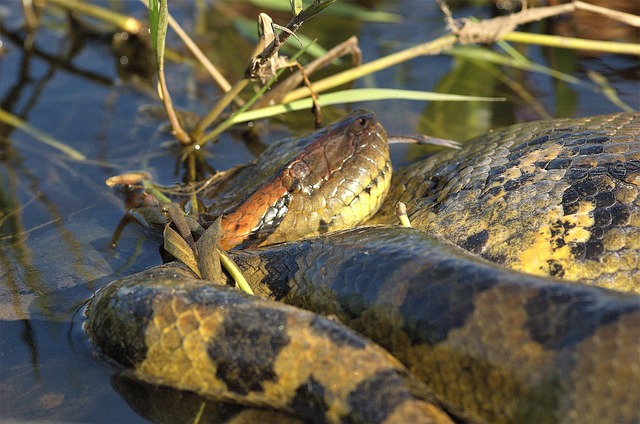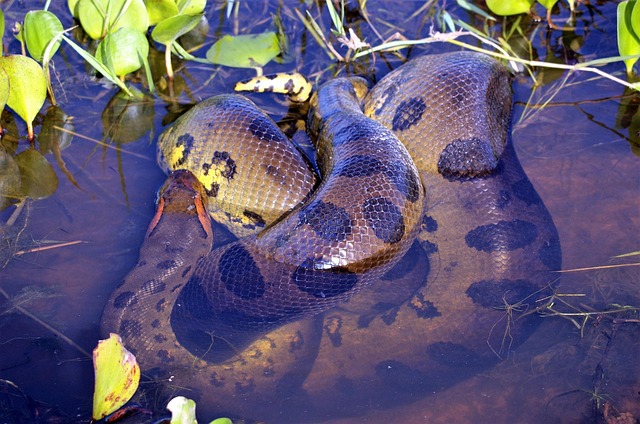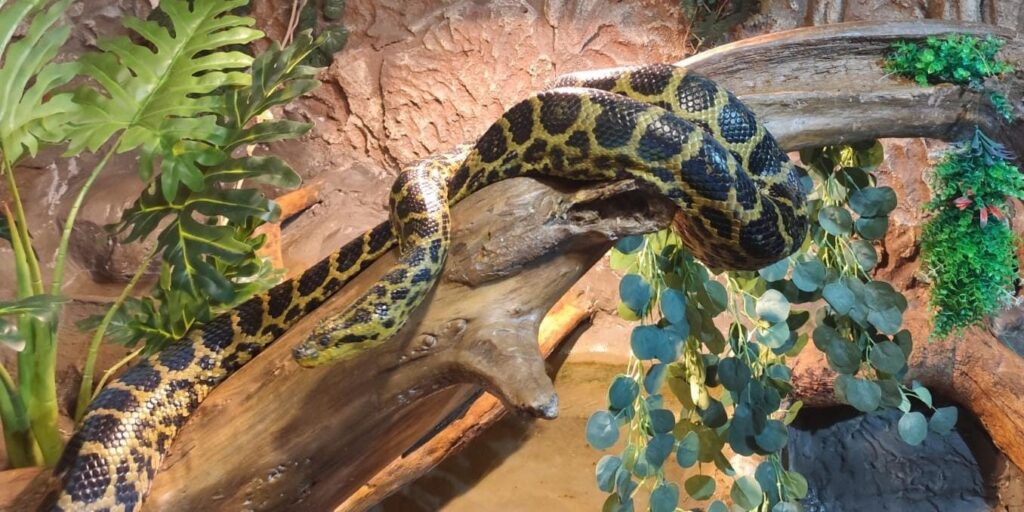
The yellow anaconda (Eunectes notaeus) is one of the most fascinating—and misunderstood—reptiles of South America. Native to Argentina, Paraguay, Bolivia, and southern Brazil, this semi-aquatic snake thrives in wetland environments such as the Iberá Wetlands and Bañado La Estrella. Known for its striking yellow and black coloration, the yellow anaconda is non-venomous, yet still one of the largest snakes in the world in terms of girth and strength.
Join the Argentina Herping Expedition 2025 and discover the incredible wildlife of the Atlantic Rain Forest and the Ibera Wetlands.
For wildlife enthusiasts and reptile lovers, encountering a yellow anaconda in the wild is a rare and thrilling experience, offering insight into the rich biodiversity of Argentina’s ecosystems.
Where to See Yellow Anacondas in Argentina
Yellow anacondas are most commonly found in:
- Iberá Wetlands (Corrientes Province)
- Bañado La Estrella (Formosa Province)
- Along the Paraná River Delta
- Occasionally in Chaco and El Impenetrable National Park
They prefer slow-moving waters, marshes, lagoons, and floating vegetation where they can stay partially submerged and ambush prey.
Characteristics and Behavior
Though not as massive as their green cousins in the Amazon, yellow anacondas are still formidable constrictors. On average, they grow to 2.5–4 meters (8–13 feet) in length, though larger individuals have been reported.
Key features:
- Bright yellow to olive coloration with bold black blotches and bands
- Thick, muscular body adapted for constriction
- Semi-aquatic lifestyle: excellent swimmers but less agile on land
- Solitary and mostly nocturnal
They are ambush predators, feeding on a wide variety of animals including fish, birds, amphibians, and small mammals. They kill by constriction, coiling around their prey and suffocating it.
Are Yellow Anacondas Dangerous?
While their size and appearance can be intimidating, yellow anacondas are not aggressive toward humans. Bites are rare and typically happen only when the snake feels cornered or provoked. They are non-venomous, and their role in controlling populations of rodents and other animals makes them a vital part of the ecosystem.
Conservation and Threats
Although not officially endangered, yellow anacondas face several threats:
- Habitat loss from agriculture and development
- Persecution due to fear and misinformation
- Illegal wildlife trade (though less frequent today)
In areas like Iberá, conservation initiatives have helped raise awareness and protect crucial wetland habitats where anacondas thrive.
Cultural and Ecological Significance
In local folklore, anacondas are often viewed with awe and superstition—seen as guardians of the water or as mythical creatures. Ecologically, they play a crucial role as top-level predators in maintaining the balance of wetland ecosystems.
Wildlife tours in Argentina
Elegant, powerful, and misunderstood, the yellow anaconda is a symbol of the wild beauty hidden in Argentina’s wetlands. Observing one in its natural habitat is not only a unique experience but also a reminder of the delicate relationships that sustain these thriving ecosystems. For those exploring Argentina’s wilder side, the silent slide of an anaconda beneath the water’s surface is an unforgettable sight.
We’re a local tour operator based in Buenos Aires, which offers custom tours in Argentina and Chile. We invite you to contact us, and start planning your next incredible journey to South America!
Get inspired by some of our travel ideas, listed below:
Puma Tracking Tour and Orca Watching
Mision Province & Ibera Wetlands
Orca Whale Watching in Patagonia Argentina
Iguazu Falls, Peninsula Valdes and the Wetlands
Where to see Penguins in Patagonia
Peninsula Valdes: Wildlife Tour
0














